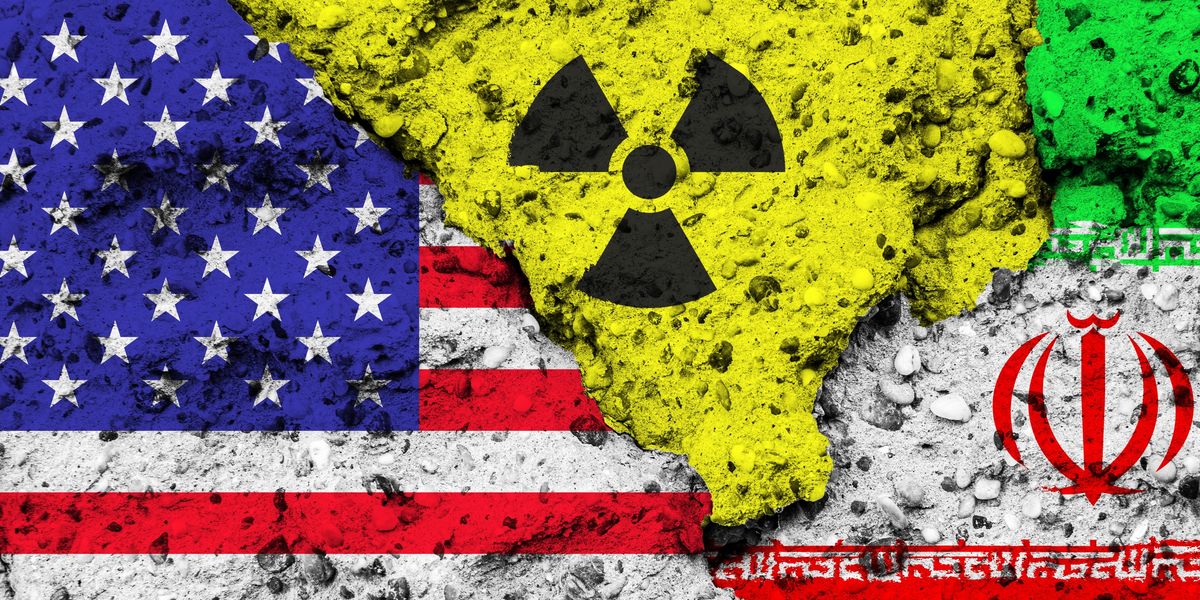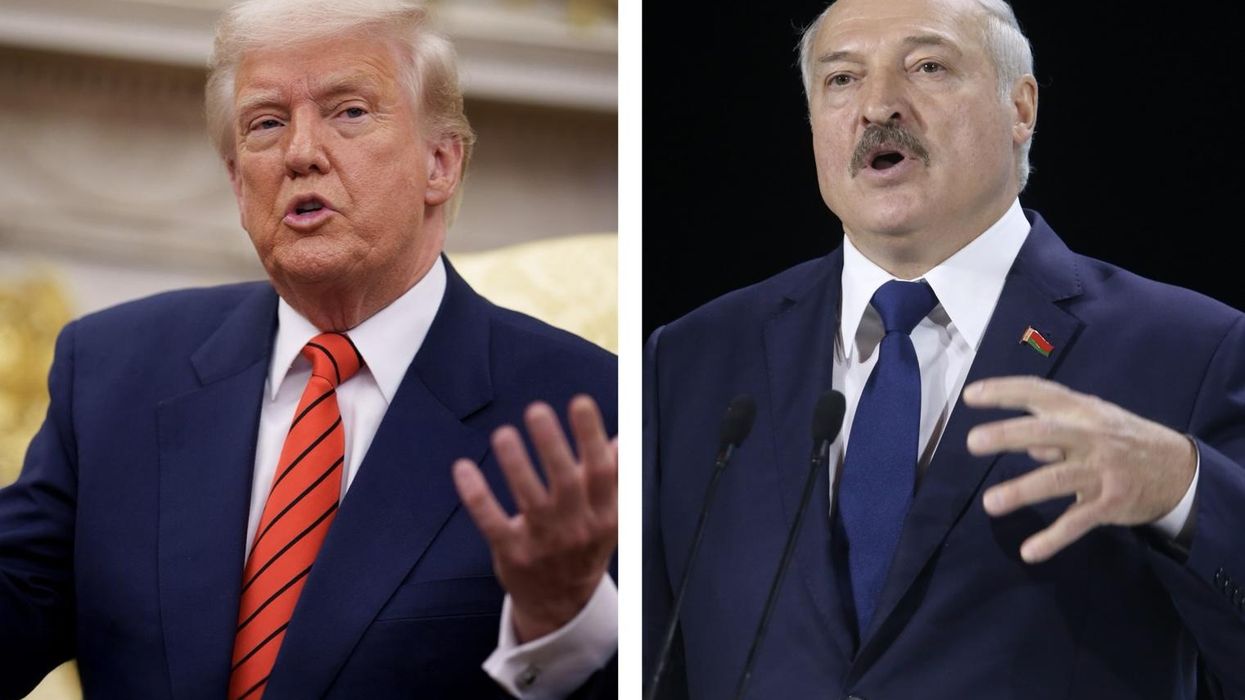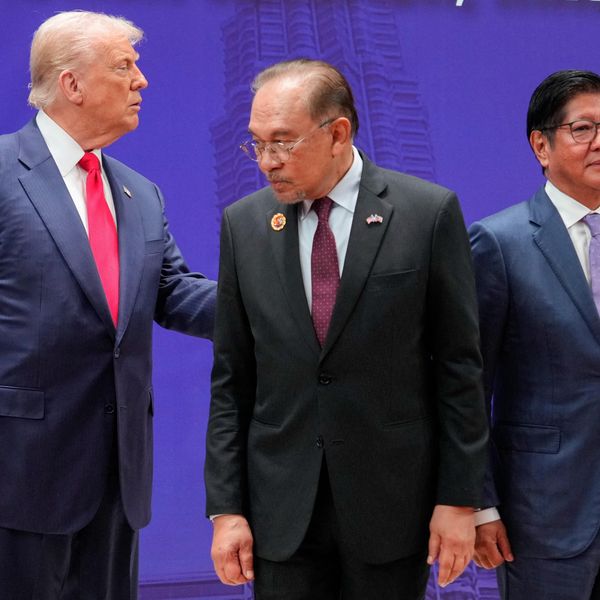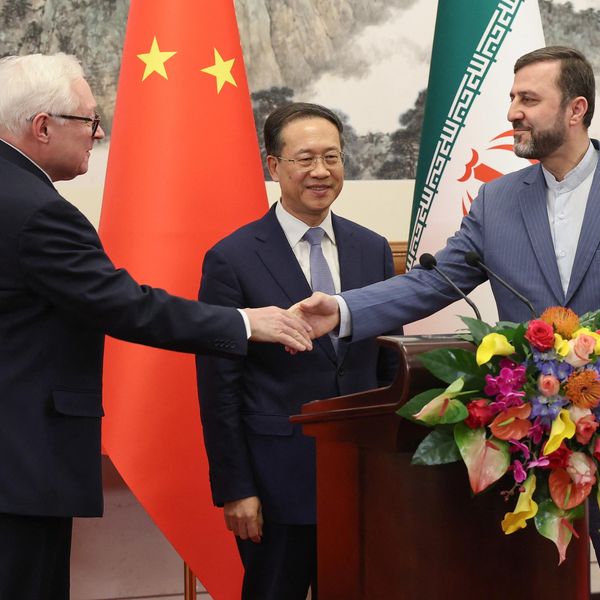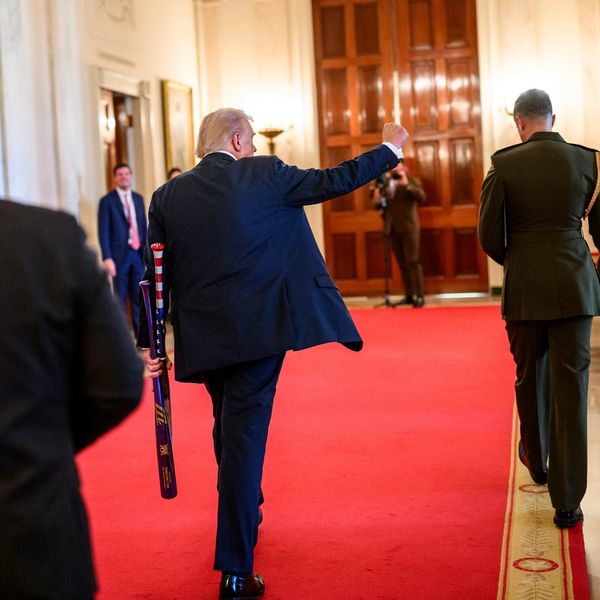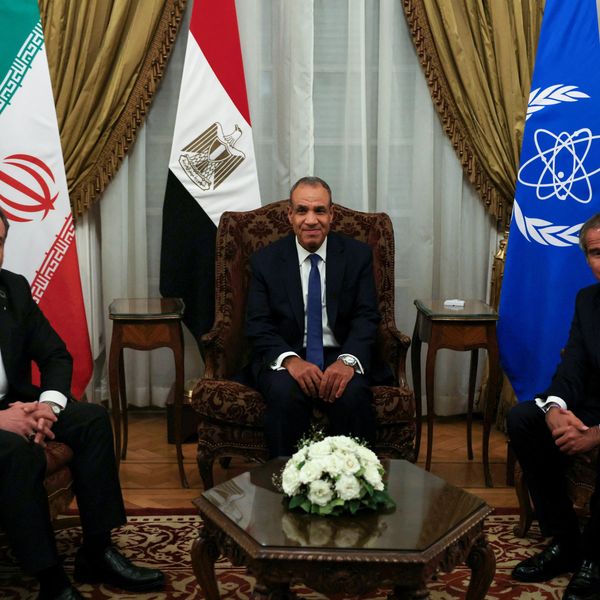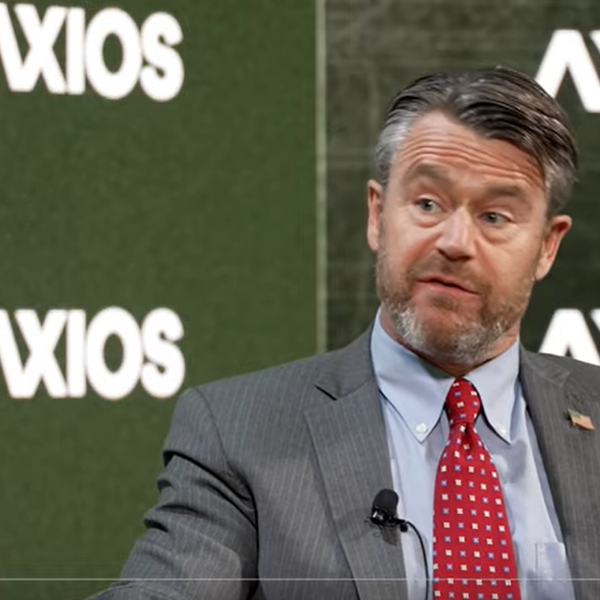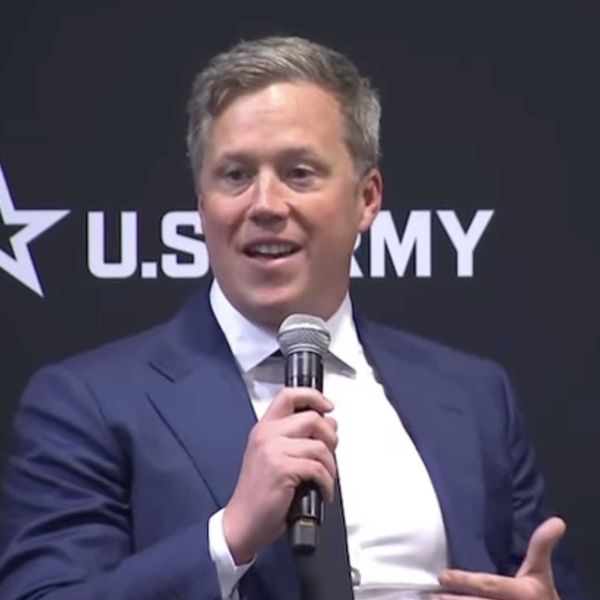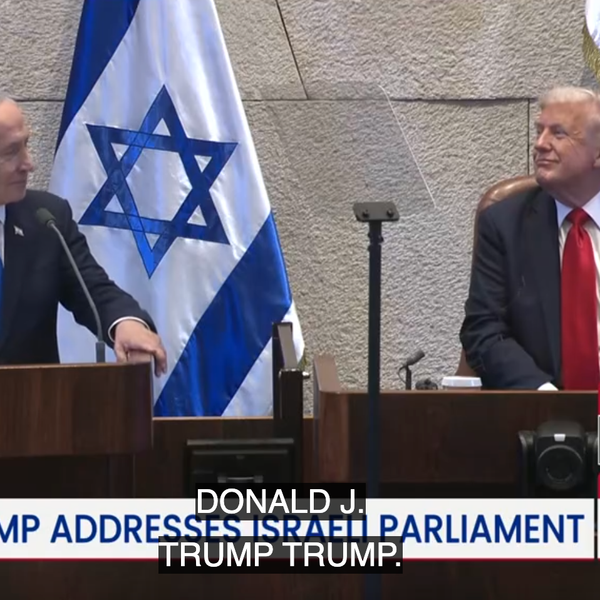President Donald Trump told reporters Monday that “very good things” are happening in his nuclear diplomacy with Iran, adding, “I think they’re being very reasonable thus far.” His optimistic tone was echoed by Iranian diplomats and Omani mediators, with Iran’s foreign minister describing the talks this weekend as “more serious” and “more detailed” than past meetings. Yet behind the upbeat rhetoric, a more complex and challenging reality is taking shape.
While earlier rounds made progress toward limiting—though not eliminating—Iran’s nuclear enrichment, even prompting parallel technical discussions, the latest round saw a slight reversal. The setback stemmed from the U.S. insistence on the unrealistic demand that Iran abandon domestic enrichment entirely.
Shutting down Iran’s more than 20,600 centrifuges is not required to achieve Trump’s stated goal of preventing an Iranian nuclear weapon. Nonetheless, it remains a long-standing demand of hardliners such as George W. Bush, Dick Cheney, Nikki Haley, Mike Pompeo, and John Bolton. Many of them understood that insisting on total Iranian capitulation was the quickest path to derailing diplomacy and laying the groundwork for war.
There are several reasons why Trump should not allow himself to be pushed into pursuing the zero-enrichment fantasy.
First, this goal has not only proven unattainable but also counterproductive, gifting Iran more time to advance its program while delaying the constraints a realistic, verification-based agreement would impose.
In 2003, Iran proposed to the U.S. a comprehensive deal aimed at resolving all major disputes, including limits on its enrichment program. At the time, Tehran had just 164 centrifuges, no stockpile of low-enriched uranium, and no capability to enrich above 3.67 percent—sufficient for civilian fuel but far below the 90 percent required for nuclear weapons.
As I describe in Treacherous Alliance, the Bush administration not only ignored the proposal but also punished the Swiss ambassador in Tehran for delivering Iran’s diplomatic overture to Washington. For Bush, nothing short of zero enrichment and regime change in Iran was acceptable.
In the absence of a deal, Iran’s nuclear program steadily expanded. By 2006, it was operating over 3,000 centrifuges. The Bush administration reluctantly agreed to support European-led talks but imposed a fatal precondition: Iran had to halt enrichment before negotiations could begin. Predictably, diplomacy stalled—and Iran’s program advanced unchecked.
By the time Barack Obama took office in 2009, Iran was operating 8,000 centrifuges and had stockpiled 1,500 kg of low-enriched uranium—enough for one nuclear weapon if further enriched. Obama’s early diplomatic efforts faltered, but by 2012, secret talks in Oman produced a breakthrough since, for the first time, the U.S. signaled it would accept enrichment in Iran in exchange for strict limits and intrusive inspections.
This breakthrough paved the way for the Joint Comprehensive Plan of Action (JCPOA), commonly known as the Iran nuclear deal. By the time it was implemented, Iran had expanded its program to 19,000 centrifuges and amassed over 10,000 kg of low-enriched uranium.
Over the past two decades, the persistent demand for zero enrichment—an unachievable goal—has only resulted in a larger and more advanced Iranian nuclear program by postponing realistic, enforceable limits on enrichment.
While these delays were damaging in the past, they pose an even greater risk today amid the looming crisis over potential UN snapback sanctions. This is yet another reason why Trump should avoid falling into the zero-enrichment trap.
The snapback mechanism, created as part of the JCPOA, allows any party to the nuclear deal to swiftly reimpose UN sanctions on Iran—without the risk of a veto from any permanent member of the UN Security Council. It was designed as a deterrent, offering a fast, veto-proof path to restore sanctions if Iran violated the agreement. However, this mechanism expires in October, and the European parties—France, Germany, and the UK—are inclined to trigger it before that deadline.
Tehran has made its position clear: If snapback is invoked, it will not only withdraw from the JCPOA but also exit the Non-Proliferation Treaty (NPT) and expel all IAEA inspectors, effectively turning its nuclear program into a black box. Exiting the NPT takes 90 days, during which there remains a window to reverse course. To align these timelines, the Europeans are expected to initiate the snapback process in June, ensuring that both the NPT withdrawal and the full reimposition of sanctions converge just before October—after which Europe loses the legal ability to act.
This would create a 90-day window for high-stakes negotiations, but one Trump should avoid for several reasons. First, the starting point would be far worse than the current talks, given the escalation caused by snapback sanctions and an NPT exit. Second, it would force the Europeans back into the process, complicating matters unnecessarily. Finally, with slim chances of success, the talks would likely shift toward renegotiating the snapback deadline to prevent a complete collapse and avoid military confrontation.
As a result, valuable time that should be spent securing restrictions on Iran’s nuclear activities would instead be consumed by negotiations over a new UNSC resolution to extend the snapback deadline. These talks would face the added difficulty of aligning the interests of the Europeans, Russia, and China, all while dealing with other geopolitical conflicts (e.g., Ukraine). In essence, a tough negotiation with Iran would be swapped for a nearly impossible one with Russia and the EU.
All of these paths eventually lead to the worst-case scenario: The collapse of diplomacy and the likely shift toward military action.
Trump is wise to be skeptical of war with Iran. Contrary to the narrative pushed by Israel and its neoconservative allies, Iran’s regional setbacks do not leave it defenseless or incapable of striking U.S. bases and personnel in the event of conflict. While the weakening of Hezbollah and the loss of Syria are significant, they haven’t affected Iran’s missile program, which remains its primary means of retaliation.
Over the past year, the U.S. military has learned that Iran’s missile capabilities are far more advanced and dangerous than previously believed. Iran’s October 2024 missile retaliation against Israel was, contrary to mainstream accounts, highly effective, breaching Israel’s air defenses—from the Iron Dome to the Arrow, David's Sling, and Patriots. In response to this failure, the Netanyahu government requested that President Joe Biden deploy America’s most advanced missile defense system, the THAAD, to Israel. Biden obliged.
Privately, the success of the attack stunned Israeli officials and prompted the Pentagon to revise its casualty estimates for a potential war with Iran. Those estimates were likely adjusted again after a single Houthi missile breached both the THAAD system and Israel’s air defenses, striking Ben Gurion Airport last week. Unlike the Iranian missile barrages, in which large numbers of missiles were launched to overwhelm the defenses, the Houthis fired only one missile—and still managed to bypass both the THAAD and Israel’s own systems.
Consequently, war with Iran will not only fail to destroy its nuclear program—Israel’s proposed bombing campaign would only delay it by a year, after which the US and Israel would have to bomb it again and again—it will likely also leave scores of Americans dead and destroy Trump’s presidency, just as the Iraq war destroyed Bush’s.
All these worst-case scenarios can be avoided. Trump has a better shot at striking a strong deal with Iran than any previous president—if he avoids the mistakes of the past and the illusion of zero enrichment. While Steve Witkoff and Marco Rubio have publicly insisted on zero enrichment as the only solution, Trump has wisely been more ambiguous. In the end, it’s his word—and only his—that matters.
This article was republished with permission by The American Conservative magazine
- Iran talks: At least they're still negotiating ›
- Enrichment is the sticking point as US-Iran talks cautiously 'hopeful' ›
- The EU's pathetic response to Trump's Iran attack | Responsible Statecraft ›
- Congress moves to put the brakes on Trump's unilateral bombing | Responsible Statecraft ›
- If Iranian regime collapses or is toppled, 'what's next?' | Responsible Statecraft ›
